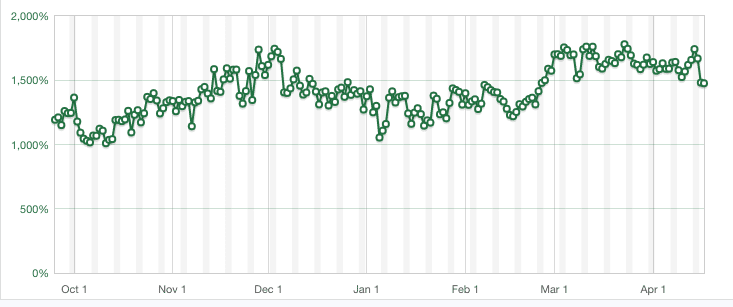Content consumers online can fall into two general buckets—those who are looking for something specific, and those who aren’t.
In psychology, these two mindsets are called the goal-oriented and the explorer mindsets. A goal-oriented user is looking for something specific, whereas an explorer is looking to consume anything interesting. They’re often found browsing social media or on the open web on a vast amount of publisher sites.
Goal-oriented users are what you tend to focus on when you optimize for search. The explorers are a bit tougher—and they’re also the ones that publishers forget about.
Occam’s Razor: the best solution is often the simplest. So, model what’s already out there. We’ve found that publishers adopting the same type of environment that explorers find on social sites do a better job of engaging them on their own sites.
Model what works: infinite feeds increase page views for 370 publishers.
We took a look at the success one of our premium publishers is having with Taboola Feed, an infinite scrolling environment that mirrors that of social media on the open web.
The below graph shows an increase in page views over the course of seven months. Since this particular publisher implemented Taboola Feed, they’ve increased by 40%.

In addition to this publisher, we recently analyzed page views across 370 publishers that have adopted Taboola Feed. All had previously recommended organic content in various ways, and recently implemented an infinite feed environment on-site.
They saw an average increase of 2.32% in pages per sessions for both smartphone and desktop devices.
The psychology behind why infinite feeds work for explorers.
Scenario 1: You need a good handyman, now, and it would be great if he also lived in the same city and didn’t charge an absurd amount.
Scenario 2: You’re on your way to work and the trains are delayed yet again. Looks like you have another hour of transport time to relax, and you start browsing CBS News to catch up on current events.
In the first scenario, time is of essence and all you want is one very precise answer as soon as possible: the phone number of the best, closest and most affordable handyman.
In the second scenario, having free time is the reason you’re there in the first place. You want to engage with as much interesting content as possible and if you don’t find it on one site, you’ll look somewhere else.
Thomas Novak, an esteemed professor from Vanderbilt University, who focuses his research on consumer behavior, found that content consumers from both mindsets can sometimes be found in the same place but for different reasons.
For example, on an e-commerce website, goal-oriented consumers will be there because they need to shop for something specific and explorers will be there for pleasure, to see if they can find something they’ll want to buy.
Both content consumers need to be met with very specific content, but it’s how you meet them with that content that matters. Optimizing your post for search engines will help you meet the consumer in the first mindset, whereas an engaging, personalized environment will help you meet, and engage, the second consumer.
Explorers prefer more options.

Another study that focused on exploratory web tasks found that those content consumers actually prefer web pages with lots of links, because they want to first gain a general overview of the topics that are being offered and only later decide which article is most relevant to them (Kim, 2009).
According to a study by Twitter and Omnicom Media Group, when people watched a video in the explorer mindset (referred to in the article as ‘feed mindset’), consumers felt that the videos were more personally relevant and a 14% increase in memory encoding was recorded.
In addition, scientists in the field of human-computer interaction from Finland and Germany actually compared the two mindsets. They found that users scroll for a significantly longer amount of time and click more in the exploratory mindset than in the goal-oriented mindset. Users in the exploratory mindset wanted first an overview of the topics by examining as many items as possible.
Infinite feeds can capture the explorer audience for publishers.

Publishers and social media channels that take into account the difference between these two mindsets, and know how to appeal to each state of mind, will be successful. Taboola Feed recommends users the best content in an engaging environment much like social feeds.
The rare cases that consumers on a publisher’s site are not in exploration mode are cases like sports publishers, where they don’t use feed for pages that aren’t articles (scores, schedules, etc.).
Users enjoy the familiar scrolling experience—they engage with an endless feed that contains sponsored content, organic content, and sponsored video, as well as third-party cards like our recently released weather card.
Taboola Feed has already been implemented by publishers worldwide, including the NY Daily News, Euronews, Bauer UK, BT, weather.com, and many more.